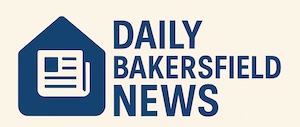As food prices continue to escalate due to inflation, supply chain disruptions, and labor shortages, maintaining a nutritious diet without overspending has become a critical concern for many households. Navigating the grocery aisles to optimize both health and budget calls for strategic planning, savvy shopping, and intentional meal preparation. With a deep understanding of market dynamics and food nutrition, consumers can discover practical ways to nourish their bodies while keeping an eye on costs. This article unpacks the essential tactics for making healthy eating affordable and sustainable in today’s economic landscape, providing actionable insights for all aiming to enhance their diet without compromising financial stability.
Effective Meal Planning for Healthy Eating on a Budget
Meal planning stands as a cornerstone strategy in managing nutrition and expenditure simultaneously. By setting a clear weekly menu focused on varied proteins, whole grains, and fresh or frozen vegetables, individuals can avoid impulsive purchases and reduce food waste substantially. Experts like registered dietitian nutritionist Mascha Davis emphasize the importance of selecting two to four diverse meals to prepare during the week and dedicating specific days for cooking. This approach not only streamlines grocery shopping but also lowers reliance on costly takeout options.
Successful meal planning involves:
- Identifying staple ingredients that can be used across multiple dishes, such as spinach or baby kale interchanged in salads or sautéed dishes.
- Creating a detailed shopping list aligned with chosen recipes, ensuring all necessary ingredients are purchased efficiently, minimizing unnecessary buys.
- Accounting for existing pantry supplies like grains or spices, substituting when possible to optimize budget.
- Scheduling grocery trips post-meal to mitigate impulse spending caused by shopping on an empty stomach.
Planning meals also opens opportunities to utilize leftovers creatively, transforming them into fresh dishes and extending the value of every ingredient. This proactive methodology aligns with saving tactics that are especially pertinent at supermarkets from Walmart and Aldi to more specialized grocery outlets like Trader Joe’s and Sprouts Farmers Market.
| Planning Component | Benefit | Example |
|---|---|---|
| Diverse Protein Choices | Balanced nutrition and variety | Chicken, lentils, eggs |
| Reusable Ingredients | Reduces cost and waste | Spinach for salads and wraps |
| Pre-determined Cooking Days | Efficiency and less stress | Batch cooking on weekends |
Those looking to deepen their knowledge of budgeting beyond grocery shopping may find valuable resources on managing overall finances, such as monthly budget guides available at Monthly Budget 2025.
Choosing Nutritious Foods Without Overspending: Frozen, Bulk, and Store Brands
Selecting the right grocery items is crucial for maintaining health while managing costs. Frozen fruits and vegetables present a cost-effective alternative to fresh produce, often retaining equal or even higher nutrient levels due to flash freezing methods. This not only helps families access nourishing foods year-round but also reduces spoilage.
Bulk buying is another impactful strategy. Stores such as Costco and Smart & Final offer loose rice, grains, canned goods, and spices in large quantities at lower unit prices. This is particularly advantageous for pantry staples that have long shelf lives. However, bulk purchases should be deliberate and focus on items that fit into the buyer’s meal plan to avoid the pitfall of stockpiling excess food that may go to waste.
Buying cheaper cuts of meat or embracing plant-based proteins like beans, lentils, and tofu can significantly cut expenses while delivering essential nutrients. Eggs also represent a versatile and budget-friendly protein option.
Additionally, store brands from retailers such as Kroger and Dollar Tree provide high-quality products often with identical ingredients to premium brands but at reduced prices, resulting from savings in advertising and logistics costs.
- Frozen mixed berries and vegetables for smoothies and stir-fries
- Bulk dry legumes and whole grains for versatile meal bases
- Cheaper meat cuts like chicken thighs or beef chuck for stews and slow cooking
- Store brand canned tomatoes and spices to flavor dishes affordably
| Item Type | Benefits | Recommended Retailers |
|---|---|---|
| Frozen Produce | Long shelf life, nutritious, affordable | Trader Joe’s, Walmart, Sprouts Farmers Market |
| Bulk Staples | Cost-effective, reduces frequent trips | Costco, Smart & Final |
| Store Brands | Lower prices, comparable quality | Kroger, Dollar Tree |
Mastering the Art of Leftovers and Meal Prep for Budget-Friendly Health
Repurposing leftovers is a powerful tool to both keep the food budget in check and maintain a rich, varied diet. Whether it is a roasted chicken turned into a chicken salad or grains from a grain bowl incorporated into tacos, creative reuse prevents food waste and adds convenience.
Meal prepping, where components like vinaigrettes, grain bowls, or slow cooker recipes are made in bulk, can reduce time spent cooking during busy weeks and diminish the need for expensive takeout. Utilizing airtight food-grade containers for storage preserves freshness and safety. The U.S. Department of Agriculture confirms that cooling hot food promptly in the refrigerator is advisable for food safety.
Helpful techniques for leftovers and meal prep include:
- Cooking double portions strategically on less busy days
- Using flexible base ingredients across meals to transform leftovers
- Separating bulk-purchased meat or poultry into portions before freezing
- Inventing new dishes like soups, casseroles, or salads with leftover ingredients
Meal prep enthusiasts can explore detailed weekly meal plans and preparation hacks to maximize efficiency and savings at platforms like Meal Prep Week 1 Hour.
| Meal Prep Strategy | Advantage | Example |
|---|---|---|
| Batch Cooking | Reduces cooking days and stress | Slow cooker chicken soup for multiple meals |
| Leftover Reinvention | Minimizes waste, diversifies meals | Grain bowl leftovers turned into wraps |
| Proper Storage | Ensures food safety and longevity | Using airtight containers and freezing |
Smart Shopping at Affordable Retailers to Maintain Healthy Diets
Choosing the right stores can be as pivotal as the food choices made. Retailers such as Aldi and Walmart offer competitively priced groceries with increasing selections of healthy options. Whole Foods Market, while traditionally considered premium, now carries more budget-conscious lines and promotions, especially via online platforms like Thrive Market which allows bulk purchasing and membership discounts online.
Discount chains like Dollar Tree introduce opportunities to pick essentials at ultra-low prices, though shoppers should prioritize core nutritious items over processed snack foods to retain healthy eating goals.
When preparing a grocery shopping strategy, consider:
- Leveraging weekly sales and promotions from store newsletters and websites
- Opting for store brands to reduce the overall bill
- Balancing shopping between bulk outlets and discount grocers for perishables and pantry goods
- Planning shopping trips to coincide with store restocking days for fresher produce availability
Resources focused on home and budget management such as Budget Lighting Upgrades and Home Maintenance Tips can provide complementary guidance for managing household needs in conjunction with food budgeting efforts.
| Retailer | Strength | Examples of Affordable Healthy Options |
|---|---|---|
| Aldi | Low-priced staples, efficient store layout | Frozen vegetables, store-brand nuts, dried beans |
| Walmart | Wide product range, competitive discounts | Lean meat options, canned tomatoes, fresh produce |
| Thrive Market | Online bulk buying, organic and specialty items | Organic grains, plant-based proteins, spices |
| Dollar Tree | Ultra-low price points on staple items | Canned goods, snacks (select healthy choices), baking essentials |
Incorporating Affordable Nutritious Foods into Daily Meals
To sustain a healthy diet on a limited budget, choosing nutrient-dense and affordable foods is vital. Staples like oats, peanut butter, beans, and seasonal or bulk-purchased produce form the foundation of cost-effective nutrition. These ingredients offer versatility for breakfast, lunch, dinner, and snacks, ensuring balanced intake of proteins, fibers, and micronutrients.
Examples of budget-friendly, healthy main ingredients include:
- Dried or canned lentils and beans: High in protein and fiber, excellent for soups, salads, and stews.
- Oatmeal and barley: Fantastic whole grains for sustained energy.
- Whole-wheat pasta and bread: Filling, fiber-rich base options for varied meals.
- Eggs: Cost-effective source of complete protein.
- Canned tuna: Affordable, lean protein for sandwiches and salads.
- Frozen bananas and berries: Ideal for smoothies and baked goods.
Cooking from scratch further enhances savings by avoiding costly convenience products. Simple recipes such as bean and barley soup, chicken quinoa casserole, or sweet potatoes with hummus dressing can be prepared at home economically. For inspiration on quick, cheap meals, readers can check resources like Cheap Easy Dinners Under $10.
| Food Item | Nutrition Highlights | Budget Benefit |
|---|---|---|
| Beans and lentils | Rich in protein, fiber, vitamins | Inexpensive, long shelf life |
| Oats | High fiber, supports heart health | Low cost, versatile |
| Eggs | Complete protein, essential nutrients | Affordable and widely available |
| Frozen fruits | Vitamin retention, antioxidant-rich | Year-round availability, less waste |

